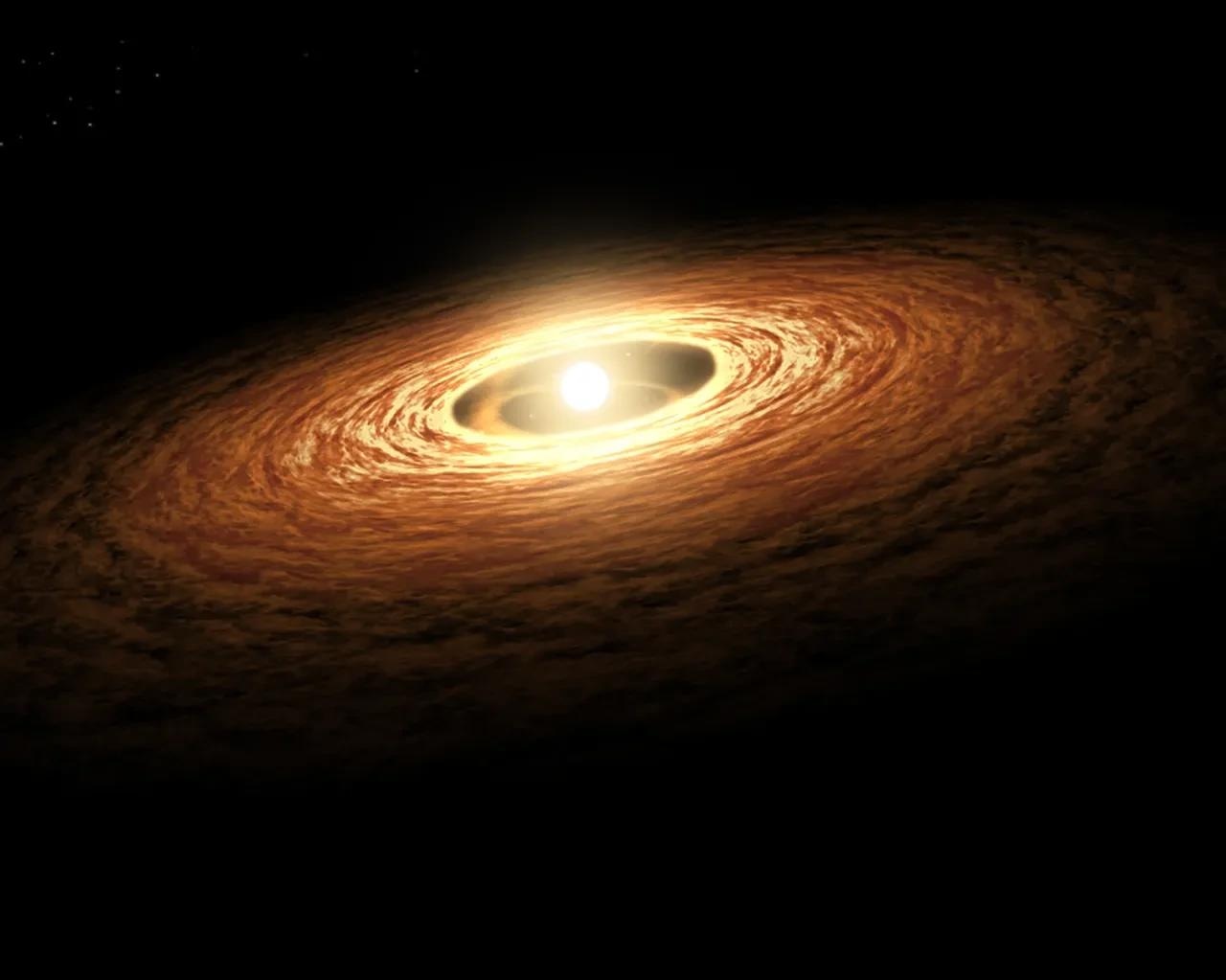Reviewed by Lexie CornerJun 7 2024
A global team of scientists utilized NASA’s James Webb Space Telescope to investigate the disk of gas and dust surrounding a young, low-mass star. The findings show the highest concentration of carbon-containing molecules yet observed in such a disk. These discoveries have ramifications for the potential composition of all planets that could form around this star.
 This is an artist’s impression of a young star surrounded by a disk of gas and dust. An international team of astronomers has used NASA’s James Webb Space Telescope to study the disk around a young and very low-mass star known as ISO-ChaI 147. The results reveal the richest hydrocarbon chemistry seen to date in a protoplanetary disk. Image Credit: NASA/JPL-Caltech
This is an artist’s impression of a young star surrounded by a disk of gas and dust. An international team of astronomers has used NASA’s James Webb Space Telescope to study the disk around a young and very low-mass star known as ISO-ChaI 147. The results reveal the richest hydrocarbon chemistry seen to date in a protoplanetary disk. Image Credit: NASA/JPL-Caltech
Rocky planets are more likely to develop around low-mass stars than gas giants, so they are the most frequent planets in our galaxy. Little is known about the chemistry of such worlds, which might be similar to or extremely different from Earth. Astronomers seek to better understand planet formation and the makeup of the planets that arise by examining the disks from which they originate.
Planet-forming disks around extremely low-mass stars are harder to analyze because they are smaller and fainter than disks around high-mass stars. The MIRI (Mid-Infrared Instrument) Mid-INfrared Disk Survey (MINDS) mission attempts to leverage Webb’s unique capabilities to bridge the gap between disk chemical inventories and exoplanet characteristics.
Webb has better sensitivity and spectral resolution than previous infrared space telescopes; these observations are not possible from Earth because the emissions from the disk are blocked by our atmosphere.
Aditya Arabhavi, Study Lead Author, University of Groningen
In a new study, this team investigated the area surrounding ISO-ChaI 147, a 1 to 2-million-year-old star with a mass of 0.11 times that of the Sun. Webb's MIRI spectrum reveals the greatest hydrocarbon chemistry known to date in a protoplanetary disk, with 13 distinct carbon-bearing compounds. The team's discoveries include the first identification of ethane (C2H6) outside of our solar system, as well as ethylene (C2H4), propyne (C3H4), and the methyl radical CH3.
Arabhavi added, “These molecules have already been detected in our solar system, like in comets such as 67P/Churyumov–Gerasimenko and C/2014 Q2 (Lovejoy). Webb allowed us to understand that these hydrocarbon molecules are not just diverse but also abundant. It is amazing that we can now see the dance of these molecules in the planetary cradles. It is a very different planet-forming environment than we usually think of.”
The team believes these findings have significant consequences for the chemistry of the inner disk and the planets that could form there. Since Webb discovered that the gas in the disk is so rich in carbon, there is likely little carbon remaining in the solid components from which planets would form. As a result, any planets that develop there could end up carbon-poor (Earth is considered carbon-poor).
This is profoundly different from the composition we see in disks around solar-type stars, where oxygen bearing molecules like water and carbon dioxide dominate, this object establishes that these are a unique class of objects.
Inga Kamp, University of Groningen
Agnés Perrin of Centre National de la Recherche Scientifique added, “It is incredible that we can detect and quantify the amount of molecules that we know well on Earth, such as benzene, in an object that is more than 600 light-years away.”
The team plans to broaden its investigation to a larger sample of such disks around extremely low-mass stars. This will help them better understand how frequent or unusual such carbon-rich terrestrial planet-forming zones are.
The expansion of our study will also allow us to better understand how these molecules can form. Several features in the Webb data are also still unidentified, so more spectroscopy is required to fully interpret our observations.
Thomas Henning, Principal Investigator, Max-Planck-Institute for Astronomy
This research also emphasizes the need for multidisciplinary collaboration among scientists. The team notes that these findings and the accompanying data can help other fields, such as theoretical physics, chemistry, and astrochemistry, interpret the spectra and investigate new features in this wavelength range.